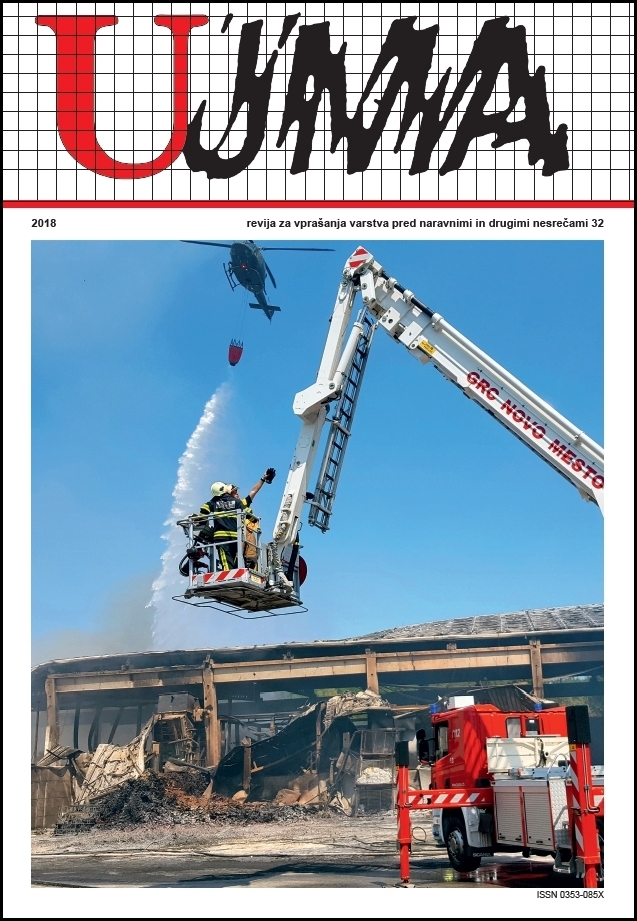CONNECTION BETWEEN THE CAUSES AND CONSEQUENCES OF FLOODS
Abstract
Floods occur when the volume of inflow to the area under observation surpasses the runoff capacity. To determine the cause of flooding, we must determine when flood-related situations arise; which process is the (main) cause of flood risk; and whether the cause is natural or of anthropogenic origin. When assessing the consequences, we must identify the level of vulnerability of people, buildings and activities to the processes unfolding during flooding, and the effectiveness and scope of the implemented self-protection and infrastructural flood prevention measures. Each of these measures can be further divided into constructional and non-constructional measures. It is only with this information that the potential responsibility of different actors can be verified, as well as related compensation based on the principle “the actor responsible pays for the consequences”. A preliminary process – the establishment of the connection between causes and consequences – is essential for enforcing damage claims. This is challenging work, especially when taking into account that during extreme flood events only a limited scope of information is gathered and stored; information which is later necessary to determine the actual situation during a flood event, the adequacy of measures taken by individual subjects, and the appropriateness of self-protection actions. Based on the experience of court-appointed expert witnesses in judicial processes abroad, this article describes the challenge of establishing and proving the connections between the causes and consequences of flood events.
References
Birkmann, J., 2006. Measuring Vulnerability to Natural Hazards: Towards Disaster Resilient Societies. Tokyo, Japan: United Nations University Press, 271–289.
BMLFUW, 2014. Avstrijski katalog ukrepov za obvladovanje poplavne ogroženosti (Maßnahmenkatalog, Maßnahmen des Hochwasserrrisikomanagementplans).
DIN 31054 – povzeto po Romang H., 2004. Wirksamkeit und Kosten von Wildbach-Schutzmassnahmen. Geographica bernensia 73, Bern.
Mihevc, A., 2014. Kratka razlaga poplav in mnenje o smiselnosti čiščenja plavja med poplavo na Planinskem polju. http://zgs.zrc-sazu.si/Portals/8/hidrogeografija/Planinsko_polje_mnenje_khg.pdf
Mikoš, M., 2007. Upravljanje tveganj in nova Evropska direktiva o poplavnih tveganjih. Gradbeni vestnik, 56, 11, 278–285.
Müller, M., Steinman, F., Rak, G., 2009. Vpliv redčenja zarasti na obseg poplavne nevarnosti. 20. Mišičev vodarski dan: 68–75.
Müller, M., Rak, G., Steinman, F., Novak, G., 2014. Katalog poplavnih scenarijev kot strokovna podlaga za načrte zaščite in reševanja ob poplavah. (Ne)prilagojeni. Ljubljana, Založba ZRC, 63–72.
Natek, K., 2011. Temeljni termini v geografiji naravnih nesreč. Dela, ISSN 0354-0596. [Tiskana izd.], št. 35, 73–101, ilustr. http://revije.ff.uni-lj.si/Dela/article/view/dela.35.5.73-101/701
Papež, J., 2011. Neme priče pri presoji nevarnosti zaradi erozijskih in hudourniških procesov : magistrsko delo = Silent witnesses in hazard assesment of erosion and torrential processes : M. Sc. thesis. Ljubljana: 180 str.; 42 str. pril., ilustr.
Prešeren, T., Zupančič, G., Steinman, F., Papež, J., Kompare, K., Kozelj, D., 2012. Monitor II: nove metode povezovanja kartiranja nevarnosti in načrtovanja zaščite in reševanja. Slovenska dopolnjena izd. Ljubljana: UL FGG, Vodnogospodarski inštitut.
Rak, G., Steinman, F., Gosar, L., 2008. Kartiranje poplavno ogroženih območij v skladu z novo zakonodajo v Sloveniji. Geografski informacijski sistemi v Sloveniji 2007–2008, 107–116.
Rak, G., Slokar, M., Steinman, F., 2014. Slovensko-avstrijsko sodelovanje pri poplavah zaradi porušitve protipoplavnih objektov na območju Gornje Radgone in Radgone = Slovenian-Austrian Cooperation in Prevention of Floods Caused by a Collapse of Flood Control Structures in the Areas of Gornja Radgona and Bad Radkersburg. Ujma, 28, 245–254.
Rak, G., Müller, M., Kompare, K., Steinman, F., 2014. Vpliv zaraščenosti poplavnih površin na potovanje poplavnih valov. Gradbeni vestnik, 63, 2–12.
Ulčar, M., 2011. Celovito upravljanje s tveganjem pri oskrbi s pitno vodo. UL FGG, Ljubljana, 129 str., [24] str. pril., ilustr. http://drugg.fgg.uni-lj.si/743/.
United Nations, 2005. The United Nations: Guidelines for Reducing Flood Losses. http://www.un.org/esa/sustdev/publications/flood_guidelines.pdf
ZVNDN, 2006. Zakon o varstvu pred naravnimi in drugimi nesrečami. Uradni list RS, št. 51/06 – uradno prečiščeno besedilo in Uradni list RS, št. 97/10.
Zveza vodnih skupnosti Slovenije, 1978. Vodnogospodarske osnove Slovenije. Ljubljana, 324 str. z grafičnimi prilogami.
Downloads
Published
Issue
Section
License

This work is licensed under a Creative Commons Attribution-NonCommercial-NoDerivatives 4.0 International License.
The articles are made available to the public under Creative Commons Attribution-NonCommercial-NoDerivatives 4.0 International (CC BY-NC-ND 4.0).


